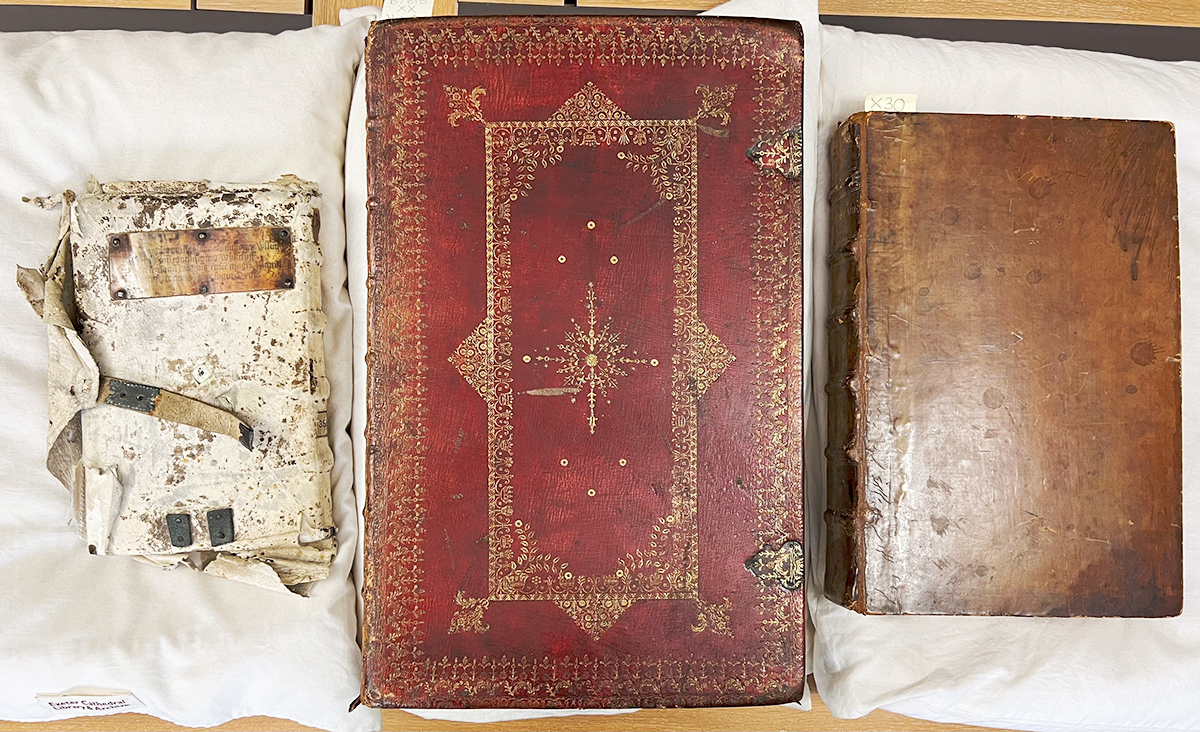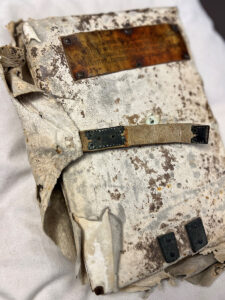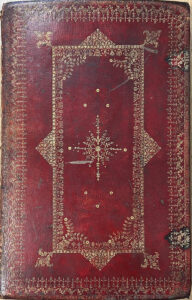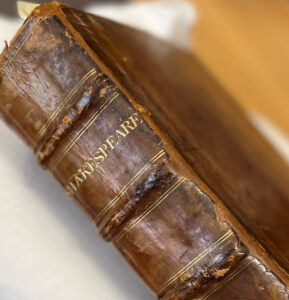 By work experience students, Nancy and Oriana
By work experience students, Nancy and Oriana
We are year 12 students who, over the past week, have been doing work experience in the Cathedral Library and Archives. This experience has taught us not only about the books and archives but also what life is like to work in this type of environment. We became particularly interested in the history of bookbinding and have decided to research and display our work on some of the Library’s printed books and manuscripts.
Bookbinding is the process of putting together a book, which is a traditional and highly skilled craft. From the medieval period, books were bound using animal skin – like calf and sheepskin – and decorated with blind or gold-tooling. Furthermore, the book’s edges could be finished with gold and held together by clasps or other forms of ‘book furniture’. Binding was a very slow process compared to the industrialproduction methods used today.

15th century chemise binding
Bound on oak boards, this medieval manuscript is wrapped in white tawed leather, called a chemise, and secured with its original strap and pin. On the back, the text of the title is protected by a layer of horn; below is the remains of a staple used to chain the book to the shelf to prevent stealing.

17th century Moroccan binding
This 1680 New Testament has a Moroccan binding which became popular in the 17th century. It was an expensive method that was made from goatskin. This leather took to colour and gilding very well, allowing decorative features. This particular Moroccan binding has seven raised bands indicating seven sewing supports; it originally had clasps to hold the boards in place.

Early 19th century calf binding
This copy of Shakespeare’s second folio, printed in 1632, has been rebound in a calfskin binding on millboard, probably in the early 19th century. There is no decoration apart from the red stained edges and the title stamped in gold on the spine, leaving it very plain looking for such an important book.